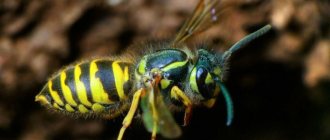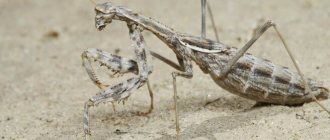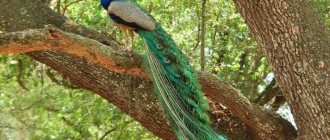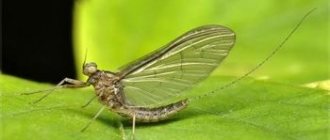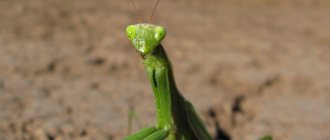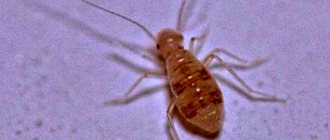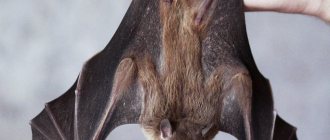This is one of the most unusual and mysterious insects on our planet. It differs from many others in its habits, lifestyle, and some behavioral characteristics that can be shocking. First of all, this is behavior during the mating season. But this is not the main feature of the praying mantis insect. In this article we will tell you in detail about this amazing creature, its lifestyle, varieties, and habitats. You will learn what the praying mantis eats and how the reproduction process occurs.
Spreading
The praying mantis is widespread in Southern and Central Europe, South and North America, Asia, Australia, and Africa. These insects do not live only in the northern regions, since they have an extremely negative attitude towards the cold. But in the humid and hot climate of tropical Africa and South America they feel excellent.
They feel no less comfortable in tropical forests, rocky deserts, and steppe regions. The praying mantis insect moves quite rarely, preferring its habitat to distant and unknown territories. The only reason that can force him to travel is a lack of food.
Interesting Facts
There are several interesting facts associated with praying mantises. Many works of biologists are devoted to the topic related to their existence. These insects gave the name to one of the series of Chinese martial arts wushu. According to an old legend, one peasant came up with this type of fighting while watching the fights of predators .
In areas of South Asia, keeping praying mantises at home is popular. Here they are bred to combat malarial mosquitoes and other dangerous insects. In 50% of cases, females eat males during mating. First, they bite off the head, and after the process is complete, they eat them completely.
The Soviet Union developed a special program for the use of insects in agriculture. They protected crops from pests. Later this had to be abandoned because they were destroying the bees.
Although praying mantises look scary and make a terrible hiss, humans should not be afraid of them. But still, children should not be allowed near them, because their strong jaws can bite through the thin skin of a child.
Common praying mantis
This is a fairly large representative of the species: the female is up to seven centimeters long, the male is about six. In the countries of Europe, Africa and Asia, where the mantis of this species lives, it can be distinguished by its ovoid abdomen and black spots located on the front pairs of legs on the inside. They are usually painted green or brown. This species has well developed wings. In any case, the praying mantis flies from branch to branch quite easily.
Chinese mantis
From the name you can understand that the birthplace and place of distribution is China. This is a large insect, reaching a length of fifteen centimeters. The male Chinese mantis is much smaller. They are painted green or brown. The peculiarity of this species is its nocturnal lifestyle, although its relatives sleep at night.
In addition, young individuals of this species do not have wings: they grow only after several molts.
The art of camouflage
Praying mantises are known as unsurpassed masters of camouflage, skillfully using camouflage colors to blend harmoniously with the surrounding landscape. For example, some African species of mantises turn black in order to successfully hunt at fire sites.
Most predators are colored in a rich, grassy green color; there are beige and brownish specimens, and only 5 Asian species from the family Metallyticidae are distinguished by their blue-green color with a metallic tint.
Cunning insects can not only mimic the color of foliage, stones and trees, but also skillfully imitate leaves, shoots, grass stems and even fruit seeds with the position of their bodies.
Orchid mantis
It seems to us that this is the most spectacular praying mantis. It got its name for a reason - for its amazing external resemblance to beautiful flowers and orchids. It is on them that the insect ambushes in anticipation of the victim. The females of this species are twice the size of the males: eight and four centimeters. Orchid mantises, even among their fellows, are distinguished by amazing courage: they even attack insects that are more than twice their size.
Spiny flower mantis
Pseudocreobotra wahlbergii is a native of Africa. It closely resembles the Indian flower mantis. Its color is especially interesting: on the upper pair of wings you can see a pattern that resembles a spiral. Representatives of this species have spines on their abdomen, which give the species its name. Representatives of this species are painted in cream shades.
They fly beautifully, both males and females, due to their light weight, and the wings of such insects are well developed. Interestingly, these insects have spots on them that resemble an eye with two pupils, which, according to researchers, can scare away predators. Representatives of the species live in plant flowers, where they lie in wait for their prey.
Natural enemies
Mantises are dangerous predators, but they have many natural enemies. They are eaten by birds, rodents, reptiles, and they also become victims of their own relatives. Under natural conditions, fights occur between them. There will definitely be a winner who will eat the loser. Most mantises die due to the fault of members of their own species, and not from rodents and birds.
They use their own color as a means of protection. It allows you to camouflage among trees and foliage. Insects practically merge with their environment; the Chinese species resembles flower buds. Only twitching antennae and a moving head can give them away. In most cases, enemies do not find mantises because they do not have sharp vision.
The population of praying mantises is gradually declining, which is facilitated by human activity. People cut down forests and plow up fields where insects prefer to live. Some species of predators are listed in the Red Book, as they are on the verge of extinction. There are known situations when some praying mantises expel others from their places.
Insects reproduce slowly in cold regions, because here they may not produce offspring for 6 months. The warm climate contributes to an increase in population.
History of insect names
In 1758, the name of these insects was given by the Swedish traveler and scientist Carl Linnaeus, who drew attention to the usual pose of the praying mantis, which is in ambush and awaits its prey. It is very reminiscent of the pose of a praying person. The scientist named the insect Mantis religiosa, which can be translated as “religious priest.” The name came into the Russian language modified - “mantis”. True, it is not called that way everywhere: for example, in Spain it is called Caballito del Diablo, which translates as “devil’s horse.” This somewhat creepy name is probably due to the habits of praying mantises.
Description of mantises
The insect has an elongated body, which distinguishes it from many arthropods. This is perhaps the only living creature that can easily turn its triangular head 360°. Thanks to this, the mantis can see its enemy approaching from behind. The insect has only one ear, but despite this, the mantis does not complain about hearing.
Its eyes have a complex facet structure and are located on the sides of the head, but in addition to them, the mantis has three more simple eyes located above the base of the mustache. The antennae can be feathery, filamentous or combed, depending on the species. Almost all species of mantises have well-developed wings, but males fly more often; females have significantly more weight, which makes flight difficult.
The wings of praying mantises are presented in two pairs: front and back. The first are the elytra, which practically protect the hind wings, which have quite bright colors, and often with original patterns. But the earthen mantis (Geomantis larvoides) has no wings at all.
The blood circulation of mantises is quite primitive, which is explained by their unusual respiratory system. Oxygen is supplied to the praying mantis through a complex system of tracheae, which are connected to spiracles (stigmas) located on the abdomen in the back and middle parts of the body. The trachea contains air sacs that enhance ventilation of the respiratory system.
Appearance
The size of mantises varies from 1 to 11 cm. Depending on the species, these insects can differ significantly from each other in color and shape. But the structure of different individuals is mostly the same.
Thanks to their green-yellow protective coloration, praying mantises are perfectly camouflaged among plants. Depending on the habitat, there are individuals of other colors: shades of gray and brown, as well as white, pink, orange and black.
What a praying mantis looks like depends largely on its environment. Thus, praying mantises that live and hunt in grass have a thin body, similar to a blade of grass or a stick.
Tropical mantises, on the other hand, have a wide, flat body that resembles a tree leaf.
Orchid mantises are skilled at hiding in flowers due to special lobes on their legs, indistinguishable in shape from orchid petals.
What does a praying mantis eat?
It should be noted that the praying mantis is a predator that feeds on smaller insects and is not afraid to attack prey larger than itself. Flies and mosquitoes, wasps and bees, butterflies and bumblebees, beetles - that's all that the praying mantis eats. Larger species are capable of attacking even small birds, rodents and small amphibians: lizards, frogs.
Praying mantises ambush their prey, quickly grab it with their front paws and do not let go until they eat it completely.
Lifestyle of a praying mantis
Having figured out what the praying mantis eats, you need to get acquainted with how the life of this insect is organized. The praying mantis leads a sedentary lifestyle, settling in one territory for a long time. If there is enough food around, an insect can spend its entire life on one plant or tree branch.
Despite the fact that praying mantises fly well and have two pairs of wings, they use them quite rarely, preferring to use their long limbs for movement. Males fly mainly at night, flying from branch to branch. In addition, they move from layer to layer, at the foot of tall trees and at the tops of crowns, depending on where the mantises live.
We talked about the fact that these insects cannot stand the cold. Therefore, the question arises of how the praying mantis overwinters. It experiences the cold period in the form of diapausing eggs, the laying of which begins in the summer and ends in late autumn. A clutch can contain up to three hundred eggs. They remain in a capsule until spring and easily tolerate frosts down to 18 °C.
Benefits and harms for humans
The insect behaves quite aggressively, so many people have a fear of it. Moreover, many representatives are large in size.
The question arises, why is the praying mantis dangerous for humans? The praying mantis does not pose a serious threat to humans, but can easily injure with its claws. To avoid trouble, you should not let small children near it, because the habits of the insect are far from angelic.
By eating many pests, the predator benefits agriculture, but at the same time it also destroys beneficial insects, such as bees.
Reproduction of praying mantises
With the beginning of the mating season (as a rule, it occurs in autumn), male praying mantises, using their olfactory organs, begin to search for females who are ready to mate. Having found his chosen one, the male performs a “mating dance” in front of her, which automatically turns him into a sexual partner. After this, mating begins, during which the female praying mantis bites off the male's head and then completely eats him.
Scientists believe that this behavior has biological reasons. By eating her “groom,” the female replenishes the supply of protein nutrients that are necessary for future offspring. In rare cases, the male manages to leave the bloodthirsty chosen one in time and avoids a sad fate.
After some time, the female lays eggs, enveloping their entire surface with a special sticky secretion, which she secretes from the glands. For eggs, this is a kind of protective capsule, which is called an ooteca. The fertility of each female largely depends on the species. As a rule, one clutch consists of 300-400 eggs. Insect larvae stay in eggs treated in this way from three weeks to six months, after which they crawl out of them on their own. Then their development proceeds rapidly, and after four to eight molts the larva turns into an adult mantis.
A little biology:
The common praying mantis, or religious mantis (lat. Mantis religiosa) is a large predatory insect of the suborder Mantises of the cockroach order. Males of this insect reach 42-52 mm in length, and females - 48-75 mm. The largest and most widespread species of mantis in Europe. There are hooks on the forelimbs, the head is triangular in shape, and the eyes are pronounced. On the back of the head there are antennae 5-7 cm long.
Its color type is very variable, ranging from yellow or green to dark brown or brownish-gray. Usually it corresponds to the habitat, matches the color of the grass, stones and leaves. The mouthparts of the gnawing type are directed downwards.
The most common color is green or white-yellow. Older individuals have a paler outfit. Dark brown spots appear on the body with age.
These insects have well-developed wings and fly well. The praying mantis has four wings. Two of them are dense and narrow, and the other two are thin and wide. They are able to open up like a fan.
In temperate climates, the breeding season is August–September. The courtship process involves carefully approaching the object of passion. The male slowly and carefully moves towards the female, trying to walk around her from behind.
Having reached a potential partner, the male jumps on her back. It supports itself with its legs, placing them in special grooves on the sides of the female’s mesothorax. In this safe position, he begins copulation. The process can last 4-5 hours. During or after copulation, the female tries to eat her partner, but sometimes they still manage to escape from the irritated person. 10-11 days after fertilization, the female common mantis lays eggs. She makes several clutches, each of which can contain from 50 to 200 eggs. Before laying, it secretes a special liquid of light yellow or brownish color, after which the liquid dries and turns into a protected capsule - an ootheca about 3 cm long and 1.5-2 cm wide. The color of the ootheca varies from light yellow to brown or gray
